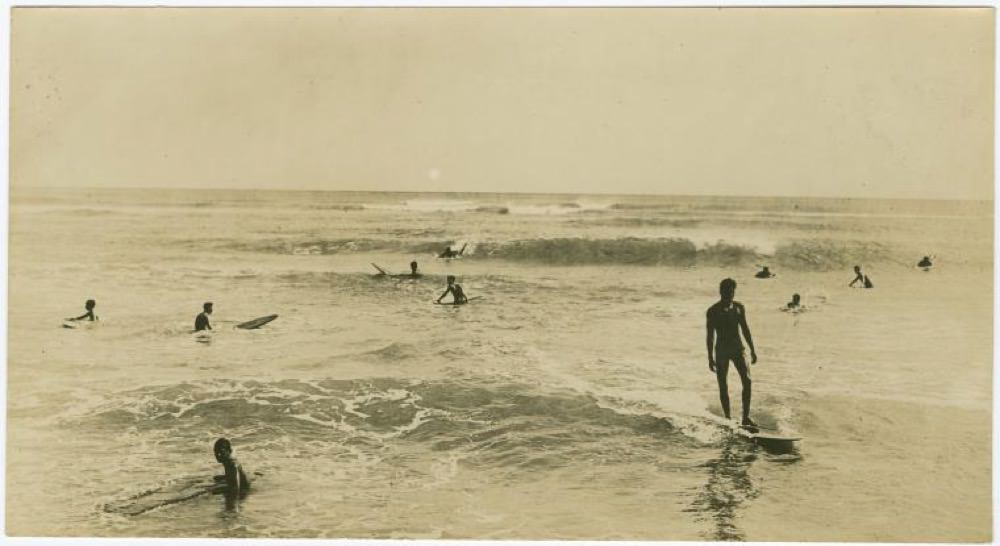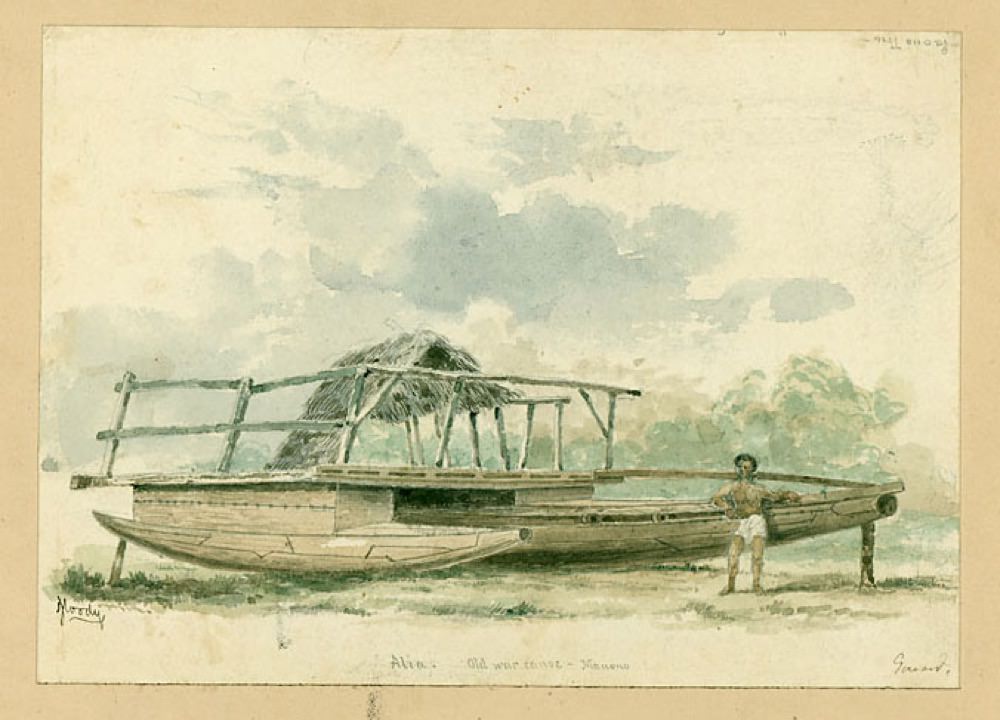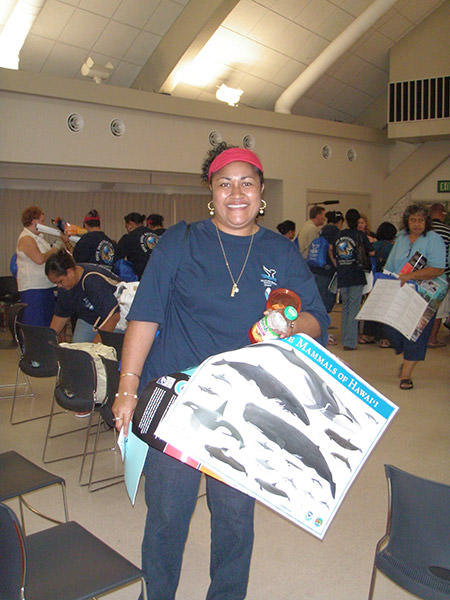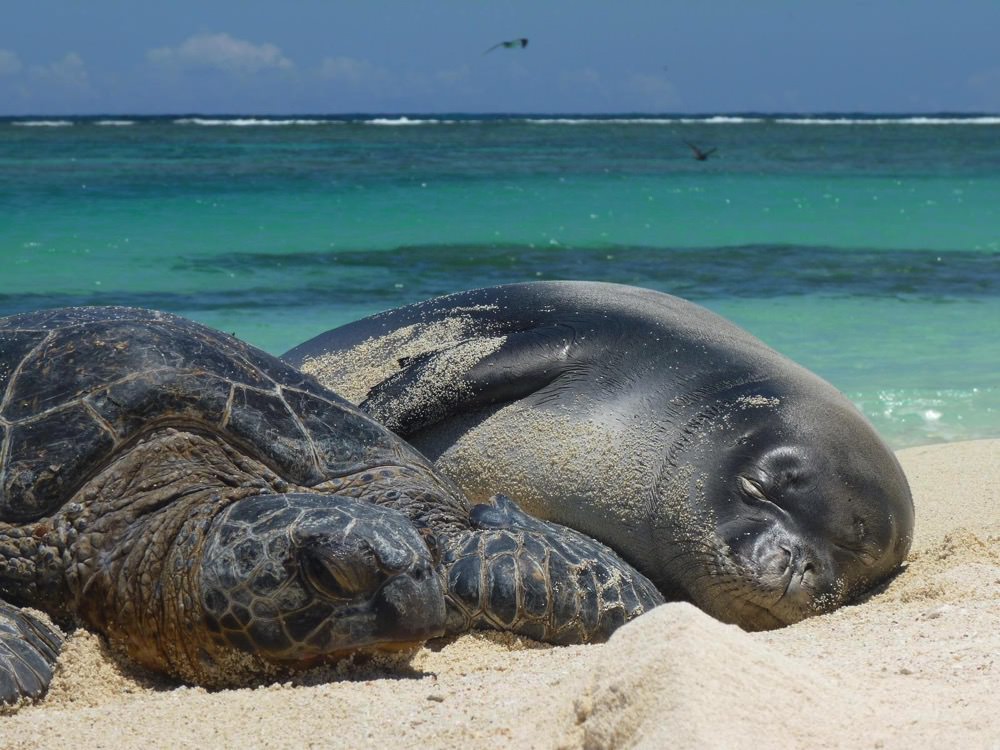Celebrating Asian-Pacific American Heritage Month in Sanctuaries
By Elizabeth Moore
May 2017
In 1919, scholar Abraham Fornander recorded a Hawaiian mele, a chant, that included the lines:
I ka i‘a ka papa i lohia i hee ai.
Ka ia a ka papa i ka huli,
Kaikai a lealea ka wai.
The fish gather in shoals and are entrapped;
The fish are gathered in one draught,
Lifting up the net til the water rejoices.
Large hauls of fish, one of the primary sources of protein for the Hawaiian and other Polynesian peoples, were a cause for joy. Hawaiians, like many indigenous peoples, had learned how to be careful stewards of their environment, using a kapu system of religious and social restrictions guiding everyday life.
The basis for at least some of these restrictions was to protect and preserve sources of food for a people with limited arable lands and sometimes dangerous seas as their larders and supermarkets. For example, some kapus left certain areas of land and water unharvested to allow stocks to replenish. Today, these practices and areas inform the protection of many of our national marine sanctuaries.

Three modern ocean parks with Polynesian ties are included in the National Marine Sanctuary System: National Marine Sanctuary of American Samoa (including Rose Atoll Marine National Monument), Hawaiian Islands Humpback Whale National Marine Sanctuary, and Papahānaumokuākea Marine National Monument. Traditional Hawaiian and Samoan practices underlay the management of all three sites.
National Marine Sanctuary of American Samoa is the second largest site in the sanctuary system at over 13,000 square miles. The sanctuary protects collapsed volcanic craters, vibrant coral patch and shelf communities, open pelagic habitat, unique fish and seabird populations, and important cultural and maritime heritage resources.

American Samoa is one of the oldest continuous Polynesian cultures in the Pacific, over 3,000 years old. The traditional way of life in the islands, Fa'a-Samoa, provides the cultural setting for management decisions. As Atuatasi Lelei Peau, the deputy superintendent for the sanctuary and a Samoan high talking chief, states, "It is paramount that any work done in the village follows traditional protocol by first requesting a meeting with the village council to discuss and to attain mutual understanding of the program. In our culture we have to reach consensus as leaders as we represent our families and we make decisions that can impact villages, the community, and the district."
It's not easy, he points out, but it is crucial: "Through dialogue and engagement this may take several months to a year, but commitment and perseverance to reach greater understanding allows buy-in with results being more meaningful."

Further north, Hawaiian Islands Humpback Whale National Marine Sanctuary was established in 1992 to protect humpback whales and their habitat. While the sanctuary uses cutting-edge modern science and management to study and protect humpback whales (including the recent disentanglement off Maui), the site also utilizes age-old stewardship practices. For example, the site has been working with technical advisors to integrate traditional Hawaiian ecological knowledge into its management regime, including aloha ‘āina, having a love and respect for all living things.
The sanctuary is also working to restore a Native Hawaiian fishpond near its visitor center and office on Maui. In partnership with the non-profit organization ʻAoʻao O Nā Loko Iʻa O Maui (Association of the Fishponds of Maui), the sanctuary is rebuilding the historical fishpond known as Kōʻieʻie Loko Iʻa using traditional methods. This three-acre pond is one of the last remaining intact traditional fish ponds along the South Maui coastline. Through projects like this, the sanctuary works with the community to mālama (care for) the ocean as Native Hawaiians historically have.
In the uninhabited Northwestern Hawaiian Islands, Papahānaumokuākea Marine National Monument is the biggest site in the National Marine Sanctuary System. In fact, it's the largest protected area in the U.S. and one of the largest in the world, encompassing 580,000 square miles of oceanic and coral habitat. Recognizing the significance of its powerful cultural importance and near-pristine natural habitats and wildlife, the monument was declared a World Heritage Site in 2010.
While the monument is closed to the general public, Native Hawaiians visit for cultural practices. In Hawaiian traditions, the Northwestern Hawaiian Islands are a sacred place, from which life springs and spirits return after death. "Some of the Native Hawaiian access trips up there [to the monument] have resulted in learning about shrines and placement of upright stones for navigation and other purposes," says Athline Clark, the monument's superintendent. "Because the cultural resources up there are undisturbed, they help to then guide the rebuilding of heiau, or shrines, in the main Hawaiian Islands. The lessons learned from the Northwestern Hawaiian Islands have helped guide the rebirth of some of these traditions in the Main Hawaiian Islands."

From the Pacific Islands to the mainland, we are a maritime nation, protected, shaped, and dependent upon our ocean. We are a people that rejoice in our ocean, a nation that, while it still has much work to do, has laid strong foundations to protect our waters. This month, as we celebrate Asian-Pacific American Heritage Month, we recognize and honor the contributions of the Native Hawaiian, Samoan, and other Polynesian peoples to our marine conservation approaches. These traditions are at the very heart of who we are and what we do as the National Marine Sanctuary System.
Elizabeth Moore is a senior policy advisor at the NOAA Office of National Marine Sanctuaries.

